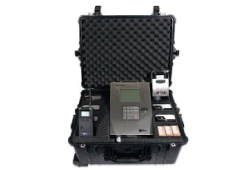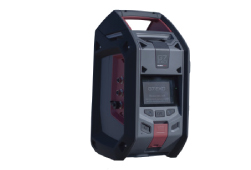An area monitor is used to provide one or more of the following:
- early warning
- remote monitoring
- continuous monitoring
- perimeter or fenceline monitoring
An area monitor provides benefits similar to those of a fixed gas detection system although they have the portability to be transported and repositioned to suit your application needs.
Aegis Sales & Service offers a range of area monitors, ideal for perimeter monitoring in hazardous areas, confined space entry, and fence line monitoring. Featuring: long-life batteries, wireless connection, multiple sensor options, location technology, smart sensors, and easy setup.
Area Monitors
Area monitors typically have a sensor that detects the presence of a hazardous substance and a display that shows the concentration of the substance. Some area monitors also have alarms that will sound if the concentration of a hazardous substance exceeds a certain level.
Sensor Ranges include*:
Ammonia, high-range ammonia, carbon dioxide, carbon monoxide, high-range carbon monoxide, chlorine, chlorine dioxide, COSH, hydrogen cyanide, hydrogen sulfide, high-range hydrogen sulfide, hydrogen-resistant carbon monoxide, LEL-infrared, LEL-pellistor, nitrogen dioxide, oxygen, ozone, photoionization detector, sulfur dioxide
What is an Area Monitor?
An area monitor is a safety device that is used to monitor a specific area for the presence of hazardous gases, vapors, or radiation. By monitoring the air quality in a specific area, area monitors can help to identify and prevent potential accidents and protect workers from exposure to hazardous substances.
What can Area Monitors detect?
Area monitors can be used to detect a wide range of hazardous substances, including:
- Toxic gases: Carbon monoxide, hydrogen sulfide, nitrogen dioxide, sulfur dioxide, chlorine, ammonia
- Flammable gases: Methane, propane, methane, ethane, hydrogen
- Vapors: Organic vapors from solvents and other chemicals
- Radiation: X-rays, gamma rays, alpha particles, beta particles
Types of Area Monitors
- Gas area monitors: These monitors are used to detect the presence of hazardous gases in the air. They are typically used in industrial settings where there is a risk of gas leaks or spills.
- Radiation area monitors: These monitors are used to detect the presence of ionizing radiation in the air. They are typically used in nuclear power plants and other facilities where radioactive materials are present.
- Environmental area monitors: These monitors are used to monitor the quality of the air, water, and soil in a specific area. They are typically used by environmental agencies to track pollution levels and to identify potential environmental hazards.
What Industries typically use Area Monitors?
Area monitors are used in a variety of industrial and commercial settings, including:
- Chemical plants
- Oil and gas refineries
- Power plants
- Water treatment facilities
- Food and beverage processing plants
- Pharmaceutical manufacturing facilities
- Hospitals
- Nuclear power plants
*refer to each model's specifications for sensor and gas compatibility.






